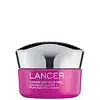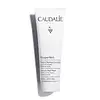What's inside
What's inside
 Key Ingredients
Key Ingredients

 Benefits
Benefits

 Concerns
Concerns

 Ingredients Side-by-side
Ingredients Side-by-side

Water
Skin ConditioningGlycolic Acid
BufferingPhytic Acid
Glyceryl Stearate
EmollientPEG-100 Stearate
Caprylic/Capric Triglyceride
MaskingGalactoarabinan
Dimethyl Isosorbide
SolventEthoxydiglycol
HumectantNeopentyl Glycol Diethylhexanoate
EmollientSodium Hydroxide
BufferingStearyl Alcohol
EmollientPropanediol
SolventPolyacrylate Crosspolymer-6
Emulsion StabilisingGlycerin
HumectantMaltodextrin
AbsorbentOryza Sativa Bran Extract
Skin ConditioningCitrus Paradisi Peel Oil
MaskingRosmarinus Officinalis Leaf Oil
MaskingSodium Ascorbate
AntioxidantRetinol
Skin ConditioningHelianthus Annuus Seed Extract
Skin ConditioningRosmarinus Officinalis Leaf Extract
AntimicrobialMicrocitrus Australasica Fruit Extract
Citrus Aurantifolia Oil
CleansingCitrus Aurantium Dulcis Peel Oil
MaskingMentha Piperita Oil
MaskingEucalyptus Globulus Leaf Oil
PerfumingAllantoin
Skin ConditioningBromelain
Skin ConditioningPapain
Skin ConditioningTocopherol
AntioxidantDimethicone
EmollientPolymethylsilsesquioxane
Vanillyl Butyl Ether
MaskingEthylhexylglycerin
Skin ConditioningHdi/Trimethylol Hexyllactone Crosspolymer
Xanthan Gum
EmulsifyingDisodium EDTA
Benzyl Alcohol
PerfumingMenthoxypropanediol
MaskingLimonene
PerfumingLinalool
PerfumingCitral
PerfumingWater, Glycolic Acid, Phytic Acid, Glyceryl Stearate, PEG-100 Stearate, Caprylic/Capric Triglyceride, Galactoarabinan, Dimethyl Isosorbide, Ethoxydiglycol, Neopentyl Glycol Diethylhexanoate, Sodium Hydroxide, Stearyl Alcohol, Propanediol, Polyacrylate Crosspolymer-6, Glycerin, Maltodextrin, Oryza Sativa Bran Extract, Citrus Paradisi Peel Oil, Rosmarinus Officinalis Leaf Oil, Sodium Ascorbate, Retinol, Helianthus Annuus Seed Extract, Rosmarinus Officinalis Leaf Extract, Microcitrus Australasica Fruit Extract, Citrus Aurantifolia Oil, Citrus Aurantium Dulcis Peel Oil, Mentha Piperita Oil, Eucalyptus Globulus Leaf Oil, Allantoin, Bromelain, Papain, Tocopherol, Dimethicone, Polymethylsilsesquioxane, Vanillyl Butyl Ether, Ethylhexylglycerin, Hdi/Trimethylol Hexyllactone Crosspolymer, Xanthan Gum, Disodium EDTA, Benzyl Alcohol, Menthoxypropanediol, Limonene, Linalool, Citral
Water
Skin ConditioningGlycerin
HumectantCoco-Caprylate/Caprate
EmollientSorbitan Stearate
EmulsifyingGlyceryl Stearate Se
EmulsifyingCetearyl Alcohol
EmollientTriheptanoin
Skin ConditioningSodium Acrylate/Sodium Acryloyldimethyl Taurate Copolymer
Emulsion StabilisingCetyl Alcohol
EmollientSilica
AbrasiveSqualane
EmollientVitis Vinifera Seed Oil
EmollientPalmitoyl Grapevine Shoot Extract
AntioxidantC15-19 Alkane
SolventGlycolic Acid
BufferingBisabolol
MaskingBenzyl Alcohol
PerfumingSodium Hydroxide
BufferingCitric Acid
BufferingCaprylyl Glycol
EmollientLactic Acid
BufferingXanthan Gum
EmulsifyingPolyglyceryl-6 Laurate
EmulsifyingArginine
MaskingPaeonia Lactiflora Root Extract
Skin ConditioningTartaric Acid
BufferingPolyglycerin-6
HumectantHelianthus Annuus Seed Oil
EmollientTocopherol
AntioxidantSorbitan Oleate
EmulsifyingGlucose
HumectantDehydroacetic Acid
PreservativeSorbitan Isostearate
EmulsifyingAcer Saccharum Extract
Skin ConditioningCarbomer
Emulsion StabilisingSodium Phytate
Papain
Skin Conditioning1,2-Hexanediol
Skin ConditioningAlgin
MaskingCitrus Limon Peel Oil
MaskingParfum
MaskingWater, Glycerin, Coco-Caprylate/Caprate, Sorbitan Stearate, Glyceryl Stearate Se, Cetearyl Alcohol, Triheptanoin, Sodium Acrylate/Sodium Acryloyldimethyl Taurate Copolymer, Cetyl Alcohol, Silica, Squalane, Vitis Vinifera Seed Oil, Palmitoyl Grapevine Shoot Extract, C15-19 Alkane, Glycolic Acid, Bisabolol, Benzyl Alcohol, Sodium Hydroxide, Citric Acid, Caprylyl Glycol, Lactic Acid, Xanthan Gum, Polyglyceryl-6 Laurate, Arginine, Paeonia Lactiflora Root Extract, Tartaric Acid, Polyglycerin-6, Helianthus Annuus Seed Oil, Tocopherol, Sorbitan Oleate, Glucose, Dehydroacetic Acid, Sorbitan Isostearate, Acer Saccharum Extract, Carbomer, Sodium Phytate, Papain, 1,2-Hexanediol, Algin, Citrus Limon Peel Oil, Parfum
 Reviews
Reviews

Alternatives
Ingredients Explained
These ingredients are found in both products.
Ingredients higher up in an ingredient list are typically present in a larger amount.
Benzyl Alcohol is most commonly used as a preservative. It also has a subtle, sweet smell. Small amounts of Benzyl Alcohol is not irritating and safe to use in skincare products. Most Benzyl Alcohol is derived from fruits such as apricots.
Benzyl Alcohol has both antibacterial and antioxidant properties. These properties help lengthen the shelf life of products. Benzyl Alcohol is a solvent and helps dissolve other ingredients. It can also improve the texture and spreadability.
Alcohol comes in many different forms. Different types of alcohol will have different effects on skin. This ingredient is an astringent alcohol.
Using high concentrations of these alcohols are drying on the skin. They may strip away your skin's natural oils and even damage your skin barrier. Astringent alcohols may also irritate skin.
Other types of astringent alcohols include:
According to the National Rosacea Society based in the US, you should be mindful of products with these alcohols in the top half of ingredients.
Any type of sanitizing product will have high amounts of alcohol to help kill bacteria and viruses.
Learn more about Benzyl AlcoholGlycerin is already naturally found in your skin. It helps moisturize and protect your skin.
A study from 2016 found glycerin to be more effective as a humectant than AHAs and hyaluronic acid.
As a humectant, it helps the skin stay hydrated by pulling moisture to your skin. The low molecular weight of glycerin allows it to pull moisture into the deeper layers of your skin.
Hydrated skin improves your skin barrier; Your skin barrier helps protect against irritants and bacteria.
Glycerin has also been found to have antimicrobial and antiviral properties. Due to these properties, glycerin is often used in wound and burn treatments.
In cosmetics, glycerin is usually derived from plants such as soybean or palm. However, it can also be sourced from animals, such as tallow or animal fat.
This ingredient is organic, colorless, odorless, and non-toxic.
Glycerin is the name for this ingredient in American English. British English uses Glycerol/Glycerine.
Learn more about GlycerinGlycolic Acid is arguably the most famous alpha hydroxy acid (AHA) with tons of research backing its benefits.
It is found naturally in sugar cane but the form used in skincare is usually synthetic for purity and stability.
Glycolic acid removes the top layer of dead skin cells to allow newer and fresher ones to emerge.
AHAs work by breaking down the structural “glue” that holds old skin cells in place. When that buildup is gone, your skin can renew itself more efficiently.
Research also shows glycolic acid stimulates collagen production, helping to firm and thicken the skin over time. This is one of its biggest advantages over other AHAs.
Overall, glycolic acid helps with:
Fun fact: Glycolic acid boosts skin hydration by helping it produce molecules that increase hyaluronic acid naturally.
To work best, glycolic acid products should have a pH between 3-4 (that’s where exfoliation is most effective but still gentle on skin).
The pH and concentration of a product are key to its effectiveness:
It is normal to feel a slight stinging sensation when using glycolic acid. This usually fades as your skin adjusts.
Because glycolic acid has the smallest molecular size in the AHA family, it can penetrate deeper, which enhances its effectiveness but also makes it more likely to irritate sensitive skin.
If your skin is very sensitive or prone to rosacea, glycolic acid may be too strong; in that case, try milder options like lactic acid or a PHA instead.
Recent studies suggest glycolic acid might even help protect against UV damage. But don’t skip sunscreen! Freshly exfoliated skin is more sensitive to the sun.
Glycolic acid is a skincare superstar. It smooths, brightens, hydrates, and firms the skin. Unless you’re highly sensitive, it’s well worth adding to your routine.
Read more about some other popular AHA's here:
Learn more about Glycolic AcidPapain is an enzyme found naturally in the papaya plant's leaves, fruit, and roots. It has antimicrobial, soothing, and wound healing properties.
Glycine and Vitamin A are naturally found in papain.
While papain is often touted as skin-lightening, further studies are needed to prove this. However, papain has been shown to help soothe acne-inflammation.
Papain belongs to a class of enzymes called proteolytic enzymes. These enzymes break down peptides and amino acids.
Some studies found papain to be a potential skin sensitizer and allergen. Those with latex allergies might also be allergic to papaya.
Learn more about PapainSodium Hydroxide is also known as lye or caustic soda. It is used to adjust the pH of products; many ingredients require a specific pH to be effective.
In small amounts, sodium hydroxide is considered safe to use. However, large amounts may cause chemical burns due to its high alkaline.
Your skin has a natural pH and acid mantle. This acid mantle helps prevent harmful bacteria from breaking through. The acid mantle also helps keep your skin hydrated.
"Alkaline" refers to a high pH level. A low pH level would be considered acidic.
Learn more about Sodium HydroxideTocopherol (also known as Vitamin E) is a common antioxidant used to help protect the skin from free-radicals and strengthen the skin barrier. It's also fat soluble - this means our skin is great at absorbing it.
Vitamin E also helps keep your natural skin lipids healthy. Your lipid skin barrier naturally consists of lipids, ceramides, and fatty acids. Vitamin E offers extra protection for your skin’s lipid barrier, keeping your skin healthy and nourished.
Another benefit is a bit of UV protection. Vitamin E helps reduce the damage caused by UVB rays. (It should not replace your sunscreen). Combining it with Vitamin C can decrease sunburned cells and hyperpigmentation after UV exposure.
You might have noticed Vitamin E + C often paired together. This is because it is great at stabilizing Vitamin C. Using the two together helps increase the effectiveness of both ingredients.
There are often claims that Vitamin E can reduce/prevent scarring, but these claims haven't been confirmed by scientific research.
Learn more about TocopherolWater. It's the most common cosmetic ingredient of all. You'll usually see it at the top of ingredient lists, meaning that it makes up the largest part of the product.
So why is it so popular? Water most often acts as a solvent - this means that it helps dissolve other ingredients into the formulation.
You'll also recognize water as that liquid we all need to stay alive. If you see this, drink a glass of water. Stay hydrated!
Learn more about WaterXanthan gum is used as a stabilizer and thickener within cosmetic products. It helps give products a sticky, thick feeling - preventing them from being too runny.
On the technical side of things, xanthan gum is a polysaccharide - a combination consisting of multiple sugar molecules bonded together.
Xanthan gum is a pretty common and great ingredient. It is a natural, non-toxic, non-irritating ingredient that is also commonly used in food products.
Learn more about Xanthan Gum